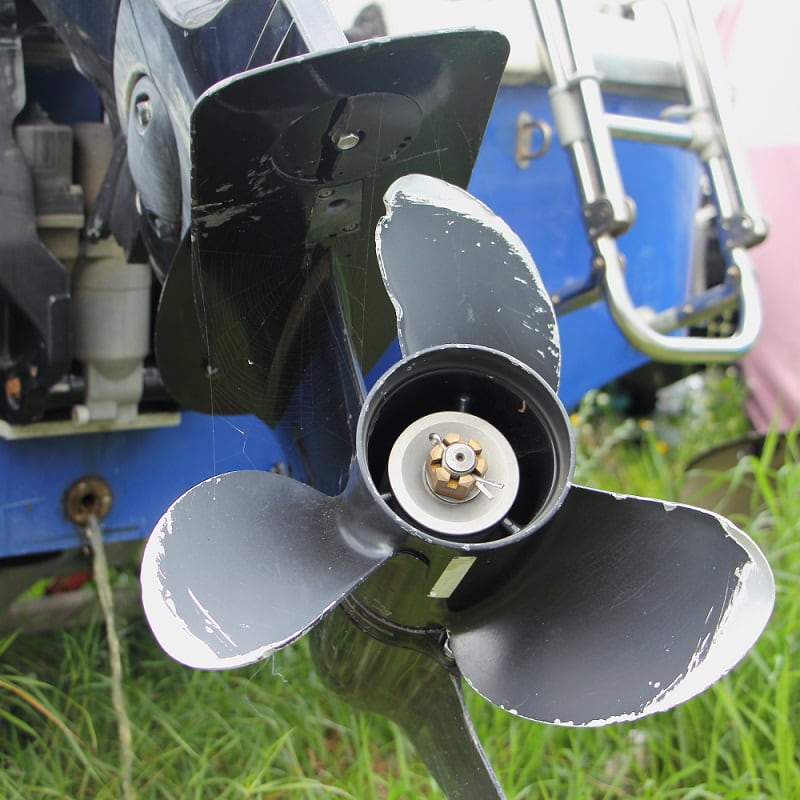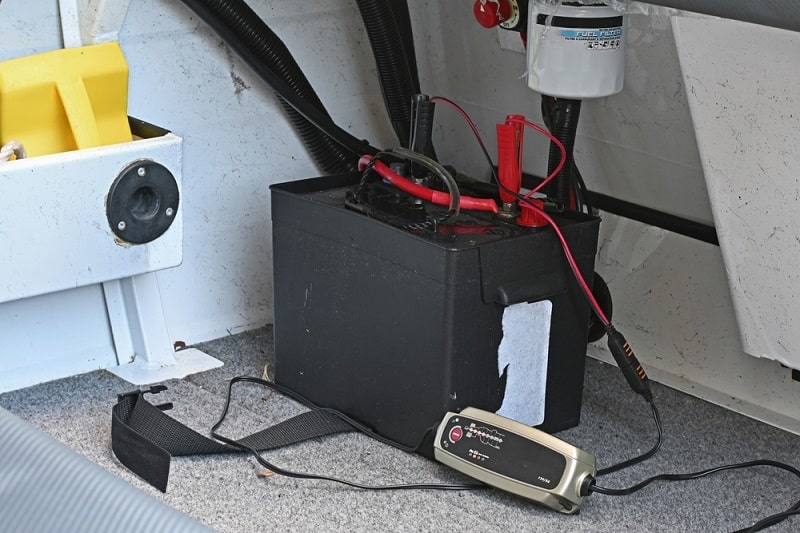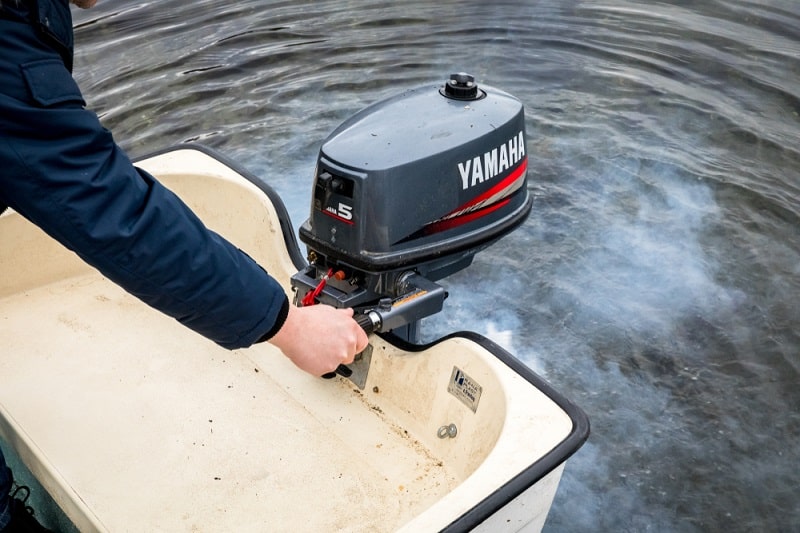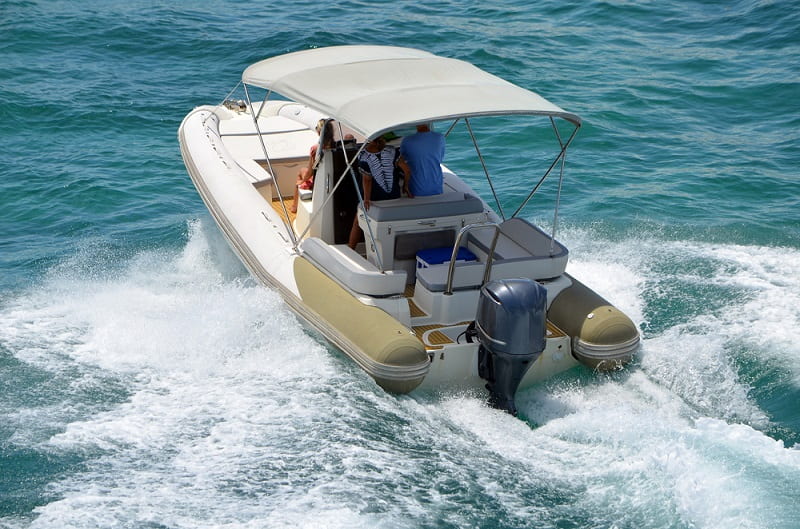So you’re out on the water, enjoying a day of boating, when your outboard motor randomly decides to trim up on its own.
Or, even more creepy, you may be at home, not even touching your boat, when the motor trims up.
What causes this unusual self-trimming?
Keep reading to find out more.
Table of Contents
Why Does My Outboard Motor Trim Up on Its Own?

Problems with your outboard motor’s trim function could have several causes. If the motor is trimming up on its own, the problem may be due to:
- A bad trim switch: Your motor likely has a trim switch on the throttle as well as the side of the engine. If one of these switches experiences damage, corrosion, or an electrical shortage, it may cause the motor to trim up or down or simply not work at all.
- Water in a trim switch: Water from rain or sea spray can easily get inside one or both of the trim switches. If it does, it can cause long term damage; in the short term, water inside the switch may actually complete the electrical circuit, causing the motor to trim up on its own as though it were turned on.
- A bad ground connection: In older motors especially, there may be a problem with the ground wire or ground connection. The wire could be damaged or the connection loose, and any such problem may cause the boat to trim up on its own.
- Wire chafing: Wire chafing happens when damage occurs to the protective covering of the wire or the individual strands begin to come loose. Wire chafing will almost certainly cause electrical issues or shorts, which in turn could lead to the trim malfunctioning.
- Battery, motor, or hydraulic pump issues: If there is no problem with the ground connection, trim switches, or related wires, you may have to look a little deeper to identify the problem. Various battery, motor, and hydraulic pump issues can also cause your motor to trim up on its own, as we’ll discuss in the next section.
Troubleshooting Outboard Motor Trim Issues
So, now that you know the problems that could be causing your motor to trim on its own, how do you go about identifying the specific problem you’re experiencing?
In this section, we’ll discuss troubleshooting techniques to help you discover why your motor’s trim is malfunctioning.
Identify a Bad Switch
The most likely issue you will face is a bad or waterlogged switch, so start by testing your trim switches.
Disconnect the trim on the throttle and shake it well to remove any water or dirt. Inspect the switch for damage such as bad wires or corrosion. Replace the switch, and repeat this process with the trim switch on your engine.
If no water comes out and there is no identifiable damage, you may have to look elsewhere for the problem. Just in case though, you may want to leave the switches disconnected for a while to allow them to air dry.
Clean and Waterproof Trim Switches
If your problem is water in the switch, you’ll want to make sure it doesn’t happen again. Apply a waterproofing product such as CRC 2-26 lubricant around each switch to keep water out.

If the switch isn’t wet but you notice a lot of dirt or dust in the switch, this could be causing the malfunction as well. Use a cleaning product such as CRC Lectra-Motive to remove the dirt, grime, and other build-ups inside the switch.

Applying these products to your trim switches can not only correct any current problems you’re having but may prevent future issues as well.
Check the Battery

If your motor is randomly trimming on its own or not working consistently, the problem could be with the starting battery.
Check the battery for signs of damage or corrosion, which could produce electrical shorts. If the battery isn’t holding a charge like it should, this could also be a sign of trouble.
If your motor won’t trim at all when you press the trim switch, check to make sure the battery switch is turned on.
Listen to the Engine Noises

If the battery appears in good working order, then the problem likely lies elsewhere. The sound your engine makes when operating the tilt or trim function may provide clues as to what is causing the issue.
- No sound: If you don’t hear anything when operating the controls, chances are you have a problem with the solenoid or the wires connecting to the trim switch.
- Clicking: If the motor makes a minor clicking sound, then the switch and the solenoid are communicating as they should and your problem lies elsewhere.
Test the Wires

If you suspect a problem with the wires, first do a visual inspection. Check the ground wire if you have one, as well as any wires responsible for providing power to the trim switches.
Your trim and tilt system should have a blue wire to raise the motor and a green wire to lower it. You’ll want to specifically test these two wires if you can’t find any visible damage anywhere else in the system.
Disconnect the wires and attach a jumper wire to the one you want to test. This wire should supply 12 volts of DC current. Applying this to the blue wire should cause the engine to raise; applying it to the green wire should lower the engine.
If you apply this current and the motor doesn’t raise or lower (depending on the wire you’re testing), you may have found the problem. This wire will likely need to be replaced.
Check for Hydraulic Pump Issues
If you can’t find the problem anywhere else, it’s time to check the hydraulic assembly pump to make sure it’s functioning correctly.
Check to make sure the fluid reservoir is full; if your fluid levels are low, the motor won’t trim or stay trimmed properly.
If the fluid level is as it should be, check the hydraulic pump. You may notice fluid around the outside of the pump, near the pistons.
If you find or suspect problems with the hydraulic pump, you will likely need to have this part professionally repaired or replaced.
Conclusion
If your motor is trimming up on its own, it is likely a problem with the trim switch, wires, battery, or hydraulic assembly pump. Follow the steps in this guide to identify and fix the problem. Good luck and stay safe out there!

I created this site to help people – to help you – with your boat problems. Instead of helping one person at a time, I want this website to be the “one-stop-shop” for everyone’s boating concerns. Read more.

